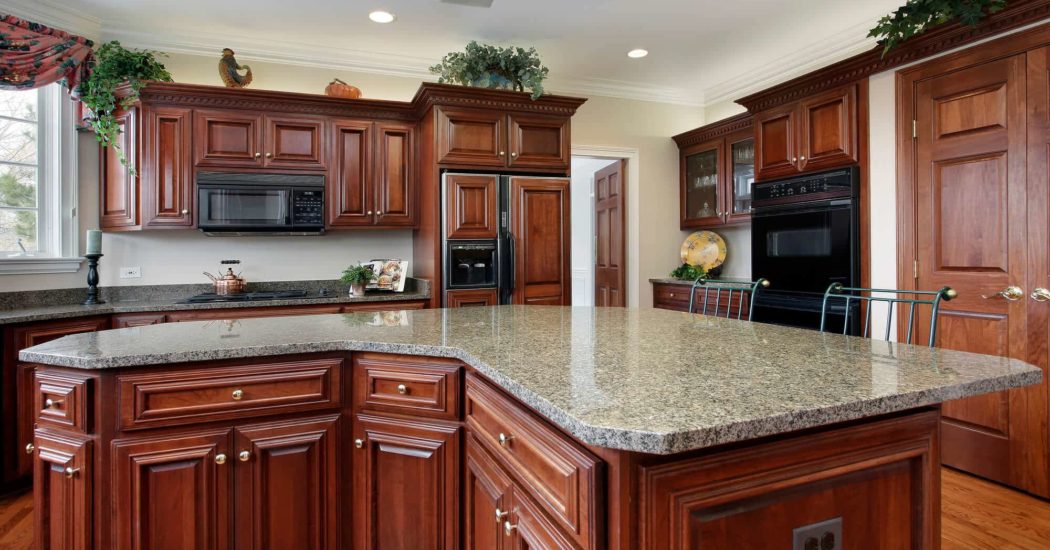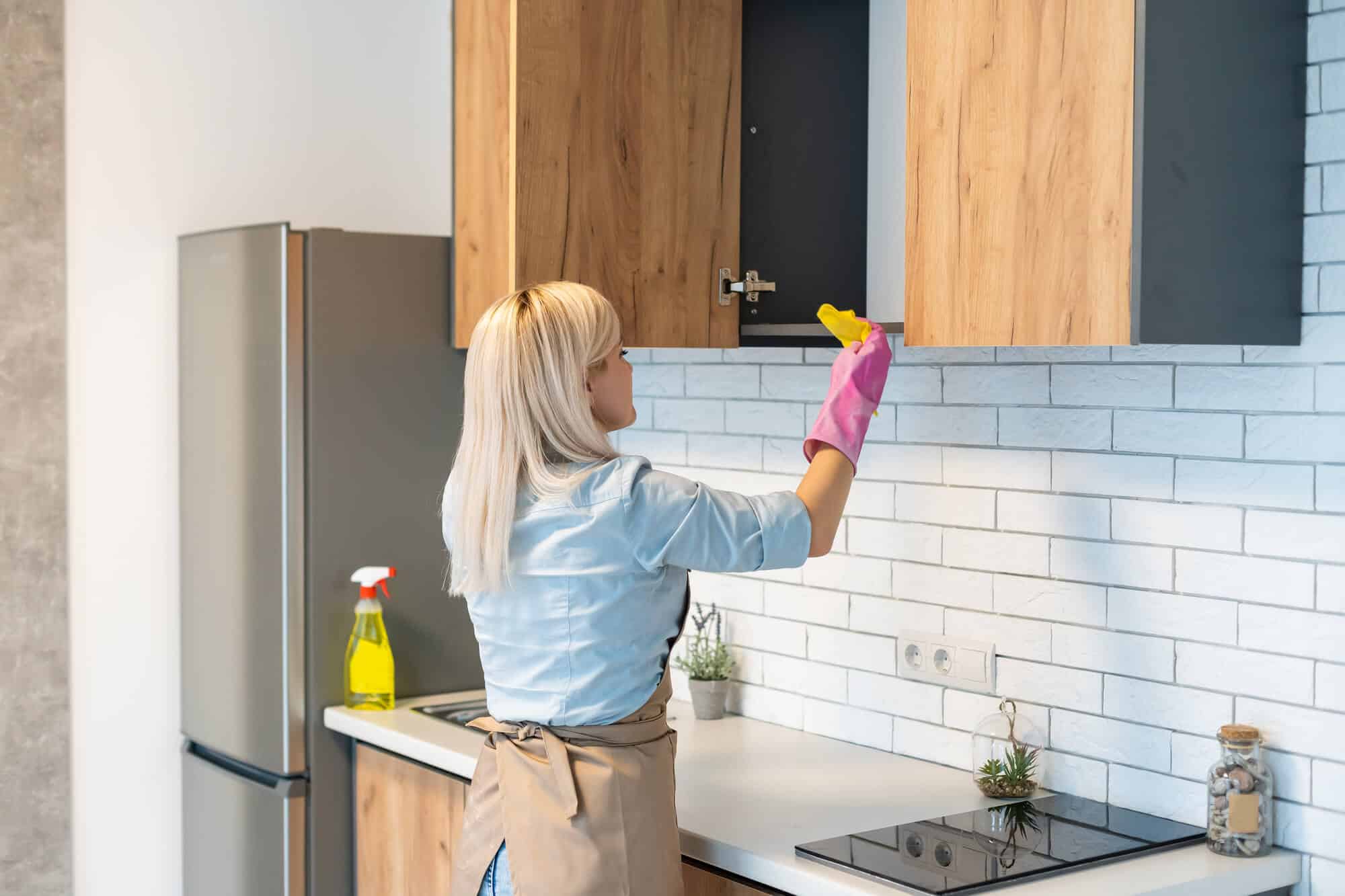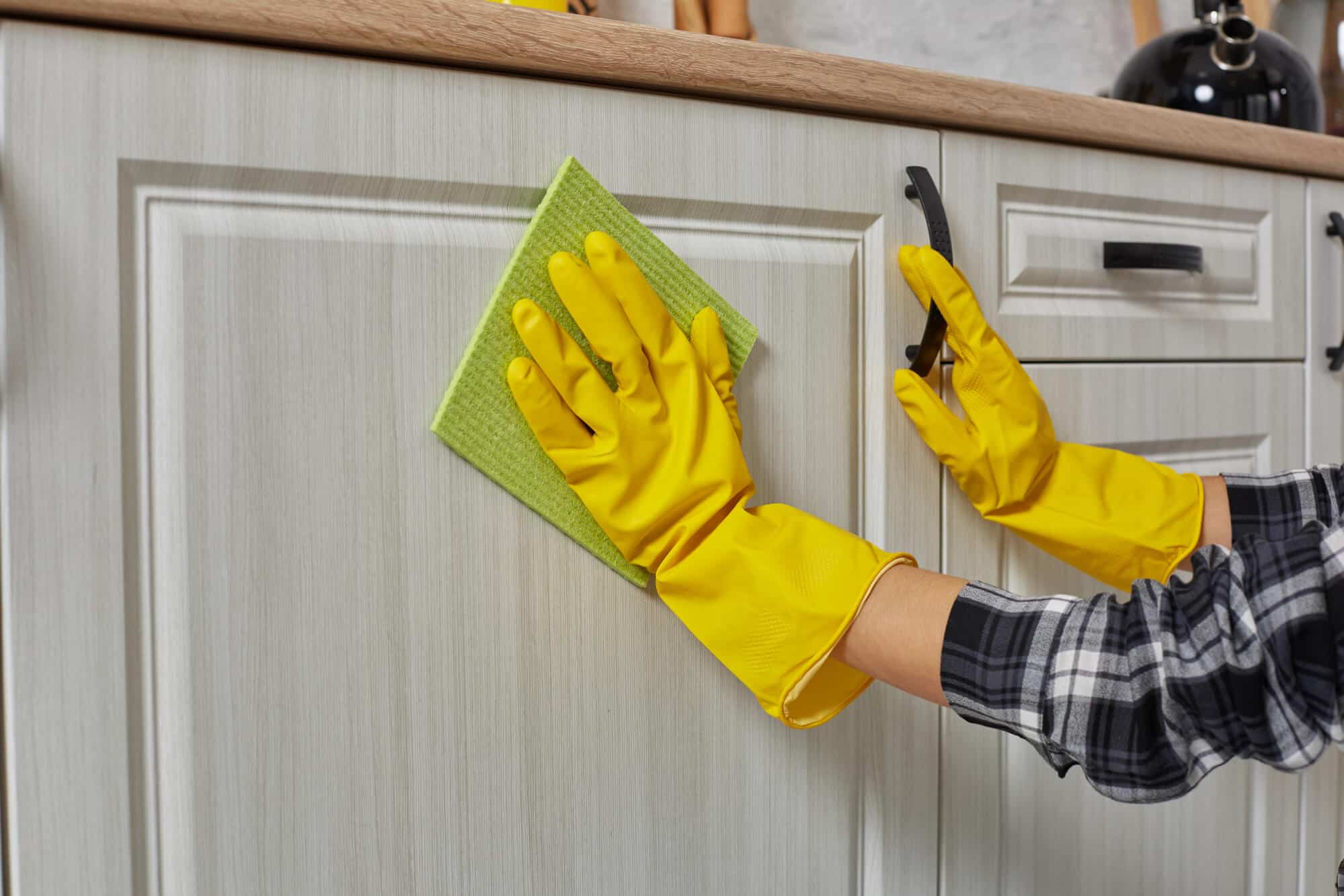
Call Us Today!

Call Us Today!

It’s no secret that kitchen cabinets are the foundation of any beautiful, organized, and functional kitchen. But keeping them looking good year after year requires some TLC.
From daily cleanings to deep cleaning twice a year, these simple steps will ensure that your kitchen cabinets stay in top condition and last longer than ever before!
So don’t wait – start taking better care of those all-important cupboards now by following our guide on how to protect kitchen cabinets from wear and tear over time.
It is important to perform daily cleanings on your kitchen cabinets. This will help keep them looking their best and make sure they last for years to come.
At least twice a year, you should deep clean your kitchen cabinets. Start by removing all the items from inside the cabinet and wiping down the shelves with a damp cloth or sponge.
Then use an all-purpose cleaner to scrub away any dirt or grease that has built up over time.
Rinse off the cleaner with warm water and dry thoroughly before replacing any items in the cabinet.
Make sure there are no leaks around windows or doors near your cabinets, as well as no standing water anywhere nearby.
If you have wood cabinets, avoid using harsh cleaning products that could strip away protective finishes or cause warping due to excessive moisture exposure over time.
From everyday wear and tear to accidental spills, it can be hard to keep them looking their best. But when it comes time for cleaning, many people reach for harsh chemical cleaners that can actually do more harm than good.
Harsh cleaners are any products containing chemicals like bleach or ammonia which can damage the finish of your wood cabinets over time. These types of cleaners should be avoided as they will strip away the protective layer on your cabinet surfaces and leave them vulnerable to scratches.

Baking soda is great at removing grease and grime without damaging the surface of your cabinets while vinegar helps disinfect surfaces naturally without leaving behind any residue or streaks.
Lemon juice is also an effective cleaner but make sure you rinse off with water afterward so there’s no acid left behind on the surface which could cause discoloration over time.
Olive oil-based cleansers are ideal if you want something gentle enough to use every day without fear of damaging your wood cabinetry in any way – just make sure you wipe it down after each use.
By using gentle cleaning products and avoiding harsh chemicals, you can help protect your kitchen cabinets from damage. Now let’s look at how to fix any existing scratches or nicks.
It’s inevitable that cabinets will get scratched and nicked over time. Whether it’s from moving furniture or just everyday wear and tear, scratches can make your kitchen look dated. There are a few easy ways to fix cabinet scratches and nicks without having to repaint the entire thing.
For deeper scratches and chips that require more extensive repair work, consider hiring professional painting services instead of attempting DIY fixes yourself which could end up costing more money in repairs down the line.
Water and moisture can cause a variety of problems when it comes to painting, including bubbling, peeling, cracking, and fading. To prevent these issues from occurring in your home’s paint job, here are some tips for keeping water and moisture away:
One way to keep water out is by sealing any cracks or gaps that may be present in your walls or other surfaces. This will help ensure that no water gets through into the interior of your walls which could damage the paint job.
You can use caulk or expanding foam insulation to fill any cracks or gaps you find before beginning your painting project.
Using high-quality primer and paints will also help protect against water damage over time. Look for products that are designed specifically for exterior applications as they typically have better waterproofing properties than those made for interior use only.
Additionally, make sure you follow all manufacturer instructions regarding application techniques so that you get optimal results from your materials.
Heat damage is one of the most common causes of wear and tear. Heat can cause wood to warp or crack, paint to bubble and peel, and hardware to become loose or corroded. To prevent this from happening, there are a few simple steps you can take.
You should be able to keep any potential heat damage at bay and ensure that all of your kitchen cabinets remain looking great for years to come.
Wood cabinets are a great way to add warmth and character to any room. But, if you want them to look their best, they must be properly cared for. To keep your wood cabinets looking beautiful and shining like new, here are some tips:
It’s important to clean your wood cabinets regularly with mild soap or detergent mixed with warm water. Avoid using harsh chemicals as these can damage the finish of the wood. Wipe down the surface with a soft cloth or sponge and dry thoroughly afterward.
Polishing is an essential part of keeping your wood cabinets looking shiny and new. Use a quality furniture polish designed specifically for use on wood surfaces such as beeswax or lemon oil-based polishes which will help protect against dirt buildup while giving them an extra shine.
Apply the polish in small circular motions until evenly distributed then buff off any excess product with a soft cloth or paper towel before it dries completely.
Exposure to sunlight can cause fading over time, so make sure that you keep your wooden cabinetry away from direct sunlight when possible by installing curtains or blinds in rooms where there is significant exposure during certain times of the day.

It is also important to inspect your wooden cabinetry regularly for signs of wear and tear such as scratches, dents, or chips. If left untreated these could become worse over time leading to more costly repair work later down the line.
If necessary have minor repairs carried out by professionals who specialize in this type of work – do not attempt DIY unless you are confident enough in doing so safely without causing further damage.
Polish your wood cabinets to give them a natural shine and make sure they look great.
Now, let’s move on to organizing your kitchen cabinets for an even better storage solution.
Organizing your kitchen cabinets is a great way to keep them looking neat and tidy. It’s also an easy task that can be done in no time at all.
The first step to organizing your kitchen cabinets is clearing out any unnecessary items. This could include old spices, expired food, or anything else you don’t need or use anymore. Taking the time to do this will help make it easier for you to find what you need when you need it.
Once everything has been cleared out, start grouping similar items together so they are easier to find later on. For example, group all of your baking supplies together in one cabinet and all of your canned goods in another cabinet. This will help create a more organized look and feel throughout the entire space.
Another great way to organize your kitchen cabinets is by utilizing baskets and containers for smaller items like utensils or napkins that may not fit into larger shelves or drawers easily.
These containers can be labeled with labels such as “utensils” or “napkins” so they are easy to identify when needed without having to search through multiple drawers or shelves for them each time something needs refilling or replacing.
Labeling everything clearly is essential when organizing any type of storage area, including kitchen cabinets. Not only does labeling make things easier for yourself, but it also helps if someone else needs access too – like family members who may not know where certain items go.
Use clear labels that stand out from other colors so they are easily visible even from far away distances within the room itself.
Maintaining your kitchen cabinets is essential to keeping them looking their best. With the right care and maintenance, you can protect kitchen cabinets from scratches, nicks, water damage, heat damage, and sun damage.
Thinking of repainting your cabinets? Give us a call at Kind Home Solutions!